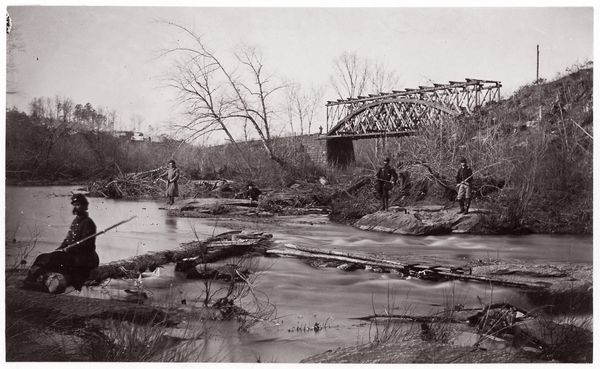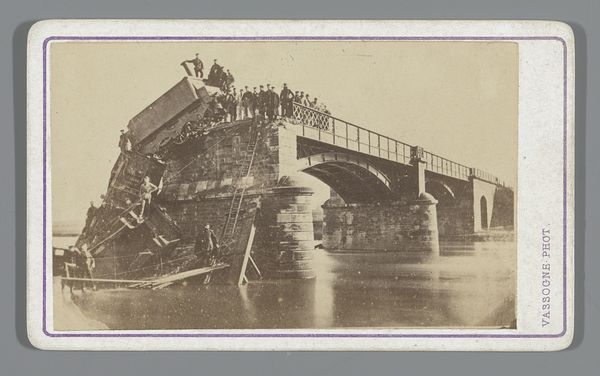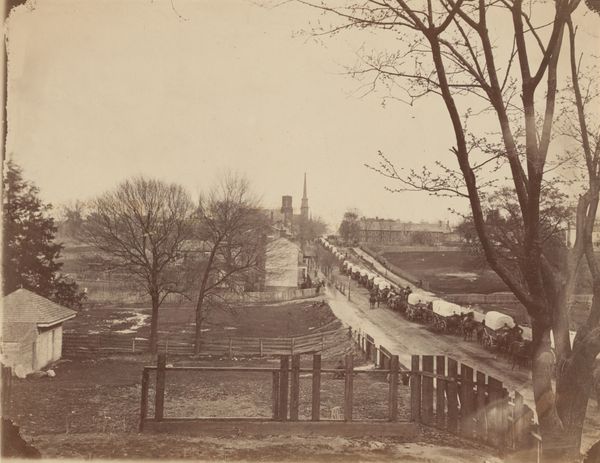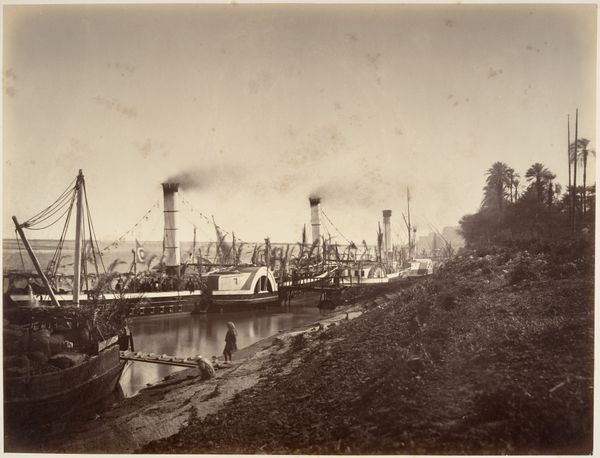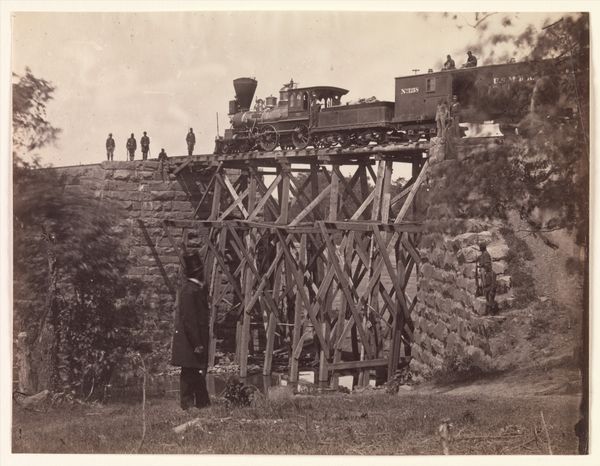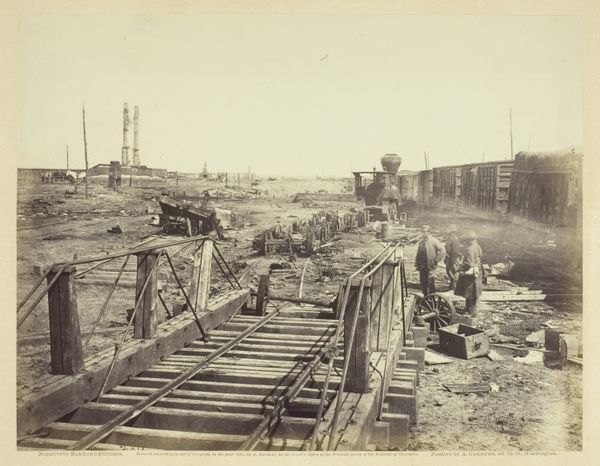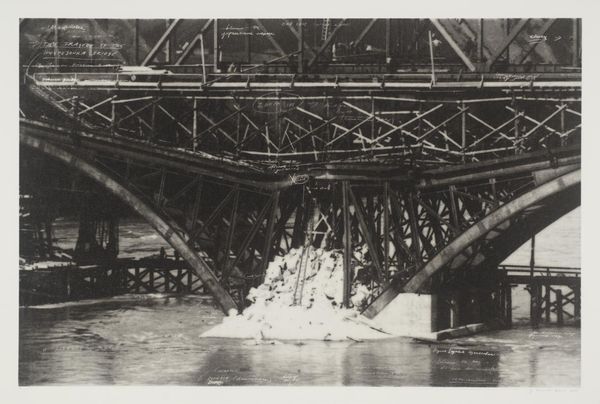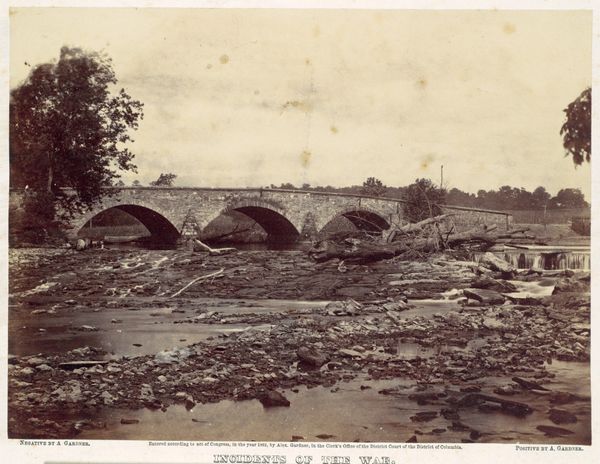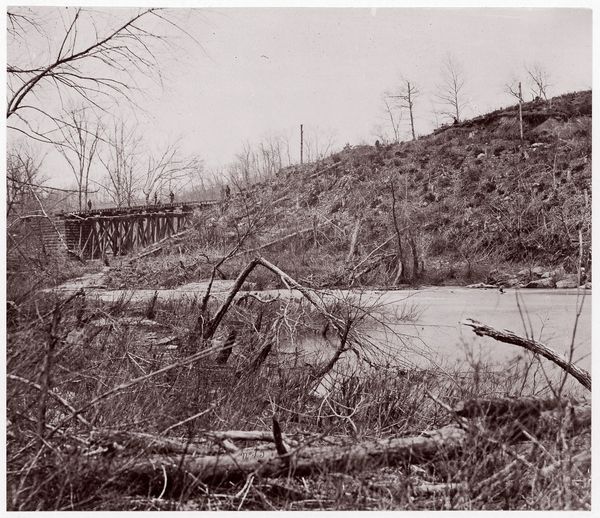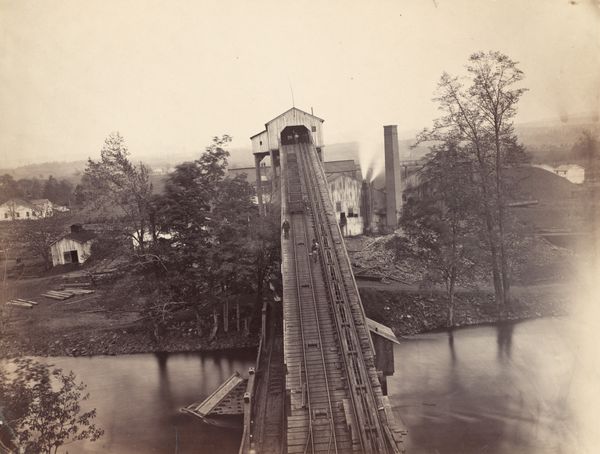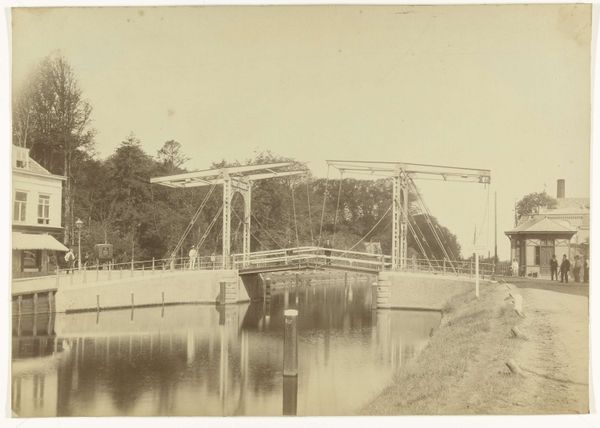
Part of Construction Corps Building New Military Truss Bridge Across Bull Run 1863
0:00
0:00
print, photography
# print
#
war
#
landscape
#
photography
#
19th century
Dimensions: Image: 15 x 20.6 cm (5 7/8 x 8 1/8 in.) Mount: 19.9 x 25 cm (7 13/16 x 9 13/16 in.)
Copyright: Public Domain
Curator: We're looking at a photograph taken in 1863 by Egbert Guy Fowx titled "Part of Construction Corps Building New Military Truss Bridge Across Bull Run," now housed at the Metropolitan Museum of Art. Editor: It has a wonderfully mournful quality, despite documenting an act of construction. The sepia tones lend a strong feeling of melancholic recollection to the image. Curator: That sepia tone is the key here, I believe, and not just for its aesthetic effect. The Civil War was so technologically modern, especially regarding photography’s documentation, but the visual language and emotional resonances were pulled directly from the 18th and 19th centuries’ symbolic understanding of war as tragic. The river Bull Run itself took on tremendous symbolism. Editor: It's fascinating how utilitarian infrastructure like a military bridge can become laden with meaning. This isn't some timeless Roman aqueduct—we can practically feel the rush to assemble this truss with the resources available on hand, notice the rather hastily made earthenworks. The speed and brute materiality speak to the urgencies of wartime. Curator: Right, and a truss bridge, historically, represents the capacity to overcome a barrier—in this case, both the geographical obstacle of the river and the symbolic divide between warring factions. But it also stands as a constant reminder of that division. Bull Run, after all, witnessed two major battles; it was not simply a geographical marker but also a space imprinted with trauma. Editor: This photograph becomes less about simple bridge building and more about visualizing logistics – the act of creating pathways through contested space. I keep thinking about the hands that built this thing: Who were these construction corps soldiers, and how aware were they of contributing to something far grander and far more brutal than mere construction? The image resonates as it is located near a major US Civil War battle. Curator: Those builders became participants in crafting an image, a constructed vision of wartime itself, meant to convey both resolve and progress, but tinged with the recognition of the conflict's toll on the land and psyche. The bridge stands as an emotional monument as much as a practical one. Editor: The bridge feels provisional somehow, not timeless like so many Roman structures intended for lasting authority. It is born of immediate necessity and therefore carries with it the tension and anxieties of the era. I find that terribly compelling. Curator: Precisely, an enduring image wrought from the immediacy of war and its enduring impact, literally materialized in wood, steel and photographic chemicals. Thank you for lending your insightful perspectives.
Comments
No comments
Be the first to comment and join the conversation on the ultimate creative platform.
